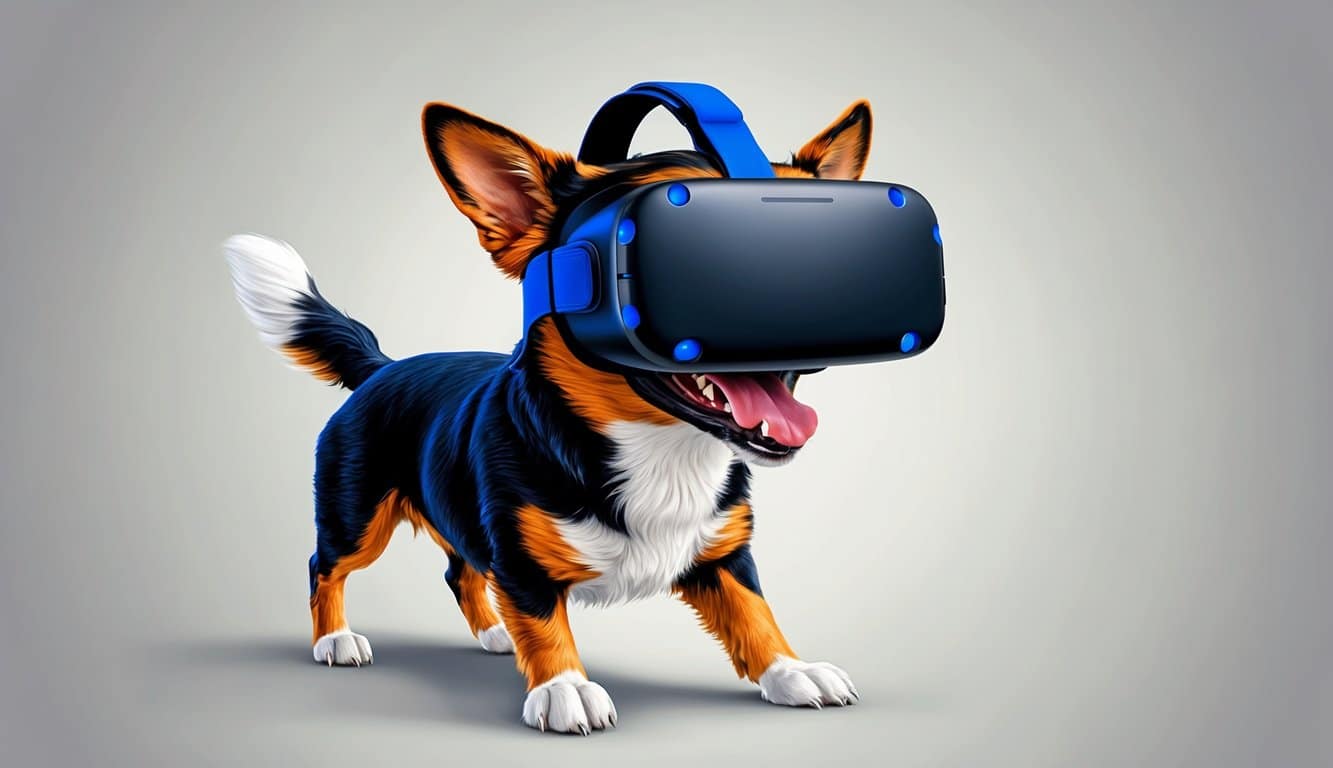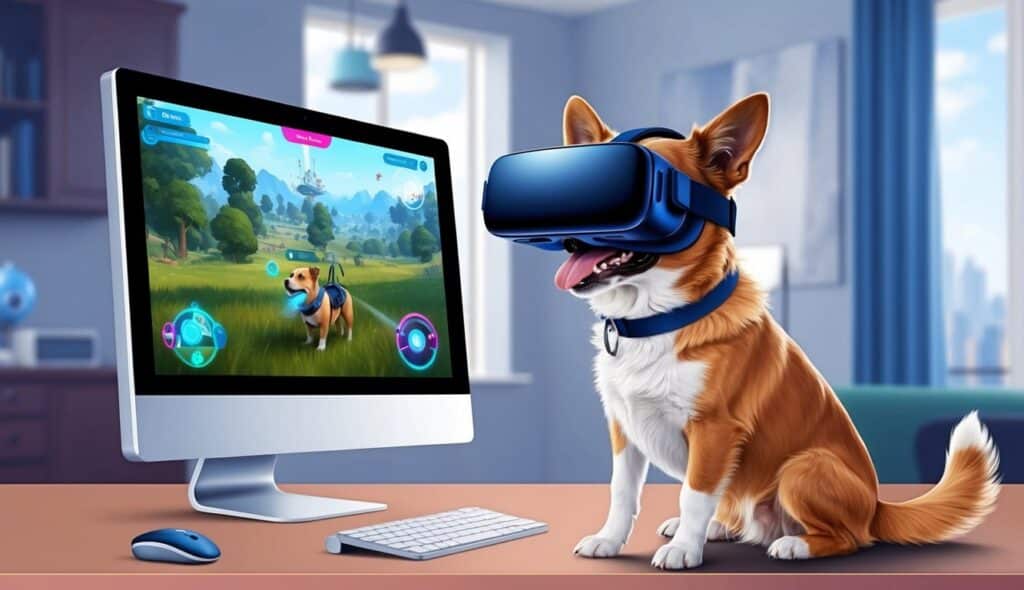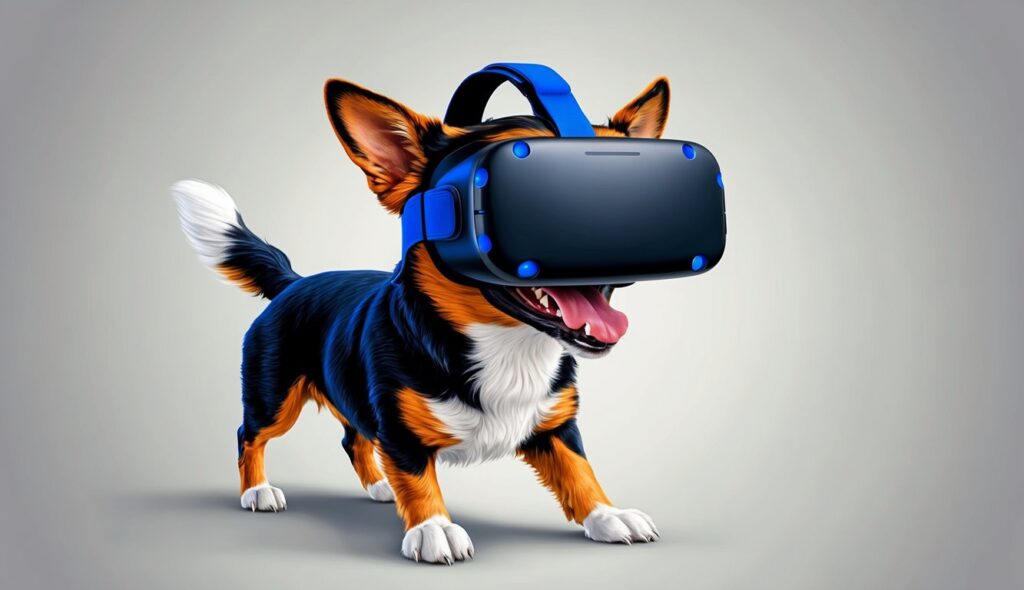Gadgets
Can Dogs Use VR Headsets?

Virtual reality headsets for humans are no longer a new concept. We all enjoy the ultra HD version of seeing and experiencing the world in extra-awesome shades and styles, but can dogs use VR headsets too?
We love our pets and often share many life experiences and adventures with them. So, you may wonder if it’s also possible to make them a part of our virtual world.
The virtual reality headset is gradually establishing itself as the new method of immersive virtual reality, with a growth estimate of 30% per year. It is a relatively new technology, and the allure of its functions has prompted many to wonder whether dogs can use VR headsets, and if so, how effective they are and whether experts would recommend it.
Next are the questions about whether the headset can have any harmful effects and the viable solutions for this issue.
We searched the market for VR headsets for dogs during our research on the topic. We dug deeper to determine if these sets provide actual value or are simply a strategy to take advantage of dog lovers.
We were also curious about experts’ opinions in the industry and users’ feedback and the possibility for dogs with underlying conditions, like poor eyesight, to use the VR headsets.
This article objectively looks into the results of our research and attempts to answer whether dogs can use VR headsets.
Can Pets Use VR?

Experts agree that pets can step into a virtual reality space, thus watching and translating the virtual experience as something natural. Therefore, they can run after a virtual squirrel or play with their favorite ball. Yet, the process of getting them into the VR world in a way that would be safe and enjoyable for them while efficient for us is still under review.
Research is underway to accommodate various pet view types, adjustability, comfort, whiskers, and animal facial structure to produce VR technology compatible with a wide range. So far, monkeys, the most closely related to humans, have had the most favorable results.
In 2018, two leading Australian animal organizations, PVRR (Pet Virtual Reality Research) and Isobar, collaborated with Zoos Victoria to release a video. The contents exhibited how they undertook research and were ready to launch a new cat VR technology. Reportedly, the technology offers simulated environments to keep your cats entertained while at home.
Next, some notable mentions that are not specifically about pets but provide quality insight on the topic.
In 2014, domestically bred chickens, termed “second livestock,” were put in the spotlight by the Oculus team, who proposed making VR technology for them. The VR headsets, in this case, would create a virtual environment that lets the chickens experience free-range living virtually.
In 2019, the Russian Ministry of Agriculture and Food issued a press release regarding experiments conducted at a farm near Moscow. The experiments showed whether giving dairy cows a virtual reality experience showcasing summer fields could reduce anxiety and increase milk yield.
Unfortunately, they did not follow up the results diligently and transparently in both of these cases. On the bright side, they reinforce our earlier statement that pets can hypothetically get into the VR world and use it effectively.
How Can Pets Use VR Headsets?
The presently available technology to access VR is the VR headset. A VR headset is a head-up display (HUD) that shows simulated virtual environments with which users can interact and gain first-person experiences.
Reportedly, due to the increasing popularity of this vision technology and consequent user rate increase, at least 40% of VR headset owners with pets have tried at one point to get them to use it. In addition, users have modified their VR headsets by adding adhesive straps and other utilities for their pets.
Users on social media sites such as Twitter and Reddit have reported using this technology to train and entertain their pets.
Can Dogs Use VR Headsets?
At first glance, you might pick the most obvious answer — yes. After all, it works mainly with sight, and with a bit of strap modification, dogs may be able to wear them.
Although it may seem convenient and straightforward, the science and technology of VR headsets still have a long way to go before we can say dogs can use VR headsets. Based on present technology, it seems almost impossible. However, we estimate progress in the next 10–20 years.
Model of VR Headset Technology

The build specifications of the VR headset are one of the most significant drawbacks for dog usage.
The present VR headset models are made for humans and designed for human specifications and comfort. With that said, there is a vast disparity between the anatomy of an average dog and that of a human. These disparities affect usage, and regardless of the intended purpose, they reduce efficiency and safety.
These differences are notable in the ways our senses process the information we receive. A dog’s senses are inclined at about 70% to smell and hearing and much less to sight, whereas humans mainly rely on sight.
Visual Limitations
The sight of a dog is wildly different from that of a human. Studies show that dogs see in varying shades of gray, blue, and yellow. Consequently, their low-light vision is better, but their overall vision is poorer than humans.
The average VR headset functions physically inches away from the eyes and, optically, about 7–10 feet away.
These numbers are ideal for humans who can see things clearly from as close as 7 cm. However, a dog’s vision may start getting blurry at the 33cm mark (breed dependent). The other senses compensate for this. This difference makes focusing and interpreting close images harder and may cause strain on their eyes and brain.
Varying Build
The models for standard VRs are human adults; therefore, there is an age limit warning. Using the wrong fit can lead to double vision when objects zoom close to the screen or poor focus, which puts a lot of stress on the brain and eyes. After repeated use, sight impairment and migraines become a higher risk.
The above applies to dogs too. The average dog’s head size and structure vary by breed, which varies further with the size of the average human head, leading to the risk of the same problems.
A smaller or bigger head can result in different eye positions that create issues with the alignment of the eyeholes of the VR headset for viewing.
Ineffective Sense of Smell
A dog’s most reliant sense is its sense of smell, which is up to 10,000,000 times better than ours and serves as its principal mode of communication, perception, and understanding. It’s the primary means through which a dog perceives and interprets the world.
The VR headsets cut off an essential aspect of this experience as they are tailored to the sight and, to a lesser extent, the auditory sense. With the reliance on sight and hearing alone, we cut off at least 40% of the dog’s perception and put enormous strain on their eyes to focus.
Thus, rare cases of dogs immersed in the VR experience show attempts to sniff and smell the object of their focus to understand and perceive it correctly.
Of course, this is to no avail, as VR headsets can’t make up for real-life smells. For example, a dog might be in a virtual reality of flowers and yet smell you and the scent of your home. Such situations could lead to confusion and anxiety as dogs will not associate their sight and hearing with the smells they perceive.
Advanced Hearing
Dogs have an expansive hearing range, catching twice the frequencies that humans do. They can hear better and from farther away, and closer sounds equal amplified sounds, which, in turn, equal amplified noise.
Insufficient Factual Data

Currently, there is not enough standard and monitored research data available to reach a definite conclusion. There is a long way to go to understand the process and result of using present VR headsets by dogs.
For example, experts have proven the difference in vision type, response rate, and refresh level between a human’s vision and a dog’s, posing concerns about the suitability of VR headsets for dogs. But there are still no VR headsets specially tailored for dog use.
Nevertheless, many users of VR headsets worldwide cannot resist the temptation of trying to answer the question “Can dogs use VR headsets?” with a “yes.” Many of them have uploaded videos and threads from Twitter, Reddit, and YouTube to provide the following responses:
Irritated or Uninterested
The most common result was uninterested behaviors, plus implied stress, strain, discomfort, or refusal from one or a combination of the disparities mentioned above.
Interested or Very Interested
Dogs probably see and perceive what’s happening, although the enjoyment of the experience is debatable. Dogs are naturally curious and social animals and, as studies show, have a significant tendency to vibe off their humans’ emotions.
If they see you express excitement over something, they become more disposed to care about and express interest in it. However, we cannot reach a factual conclusion without verbal or articulative communication between the dog and its owner and lacking scientifically based research and backed data.
Besides, the above results do not consider factors like dog breed, age, sight condition, or natural dispositions, which we believe would contribute to their acceptance of the virtual reality experience via the VR headsets.
The Public’s Disposition
Veterinarians, animal rights activists, and dog owners alike have consensually, in the majority, thumbed down the usage of VR headsets on dogs.
Are VR Headsets Harmful to Dogs?
Suppose, after extensive research, experts make a VR to accommodate dogs’ peculiar specifications. We would still be taking real short- and long-term risks that could be harmful in the worst-case scenario.
Confusion
If dogs get into the virtual reality space, it immediately introduces a whole new experience and a significant change in the environment. The dogs are thrust, not subtly, into an entirely different world.
In this case, we humans are aware of what is happening, but we cannot say the same for dogs. They are thrown abruptly into a new reality without prior warning or knowledge, which can cause disorientation. Add the dog’s inability, in such a disoriented state, to reconcile its sight with the smell of his surrounding environment, and you get complete confusion. This process, if done repeatedly, can lead to undesirable effects such as jitteriness, anxiety, spacing out, etc.
Radiation
It is emitted from technological devices and is a real risk for humans and dogs alike. Prolonged exposure may have a seriously negative impact on health.
Factor Dependent Harm
Dog breed, age, and other underlying conditions could also have undesirable effects. For example, motion-sensitive dogs are more likely to get motion sickness when using virtual reality headsets.
Regardless of the above arguments, we understand that self-trials of personal VR headsets on dogs would still occur. Anyway, here are the signs that show it’s time to stop experimenting with the VR headset and your dog:
- Visible stress
- Anxiety, jumpiness, or listlessness
- Avoidance and refusal or fear of the VR headset after use
- Panting or uneasiness
- Total disinterest, whining, or whimpering
To Conclude
All in all, dogs can still not use a VR headset. Although suitable for humans, it is mainly inefficient, non-practical, and unhelpful for dogs. It is evident that an overwhelming number of cons outweigh the negligible pros. VR headsets for dogs represent a huge market space, so progress is probably underway, though the accompanying research costs are astronomical.
Nevertheless, if the VR headset undergoes further research and some tinkering, we might have the next big thing in dog entertainment and training in a few years.
-

 Business5 months ago
Business5 months agoBest Technology Companies To Work For: 10 Top Picks For You
-

 Business5 months ago
Business5 months agoLatest Developments In Artificial Intelligence: 5 Best Breakthroughs
-

 Development and Hacking5 months ago
Development and Hacking5 months agoEmerging Technologies In Cyber Security: Full Guide In 2025
-

 Phones5 months ago
Phones5 months agoFind My Phone Using Google Account: Full How To Guide (5 Steps)
-

 Business4 months ago
Business4 months agoBest Tech Cities In The US: 7 Opportunities You Shouldn’t Miss Out
-

 Phones3 months ago
Phones3 months agoFind Samsung Phone: 6 Great Ways To Find Lost Or Stolen Device
-

 Phones2 months ago
Phones2 months agoAll Google Apps: Ultimate Guide For The Most Useful Ones (2025)
-

 Phones3 months ago
Phones3 months agoSwitch From iPhone To Android: 7 Reasons For Switching Sides


















